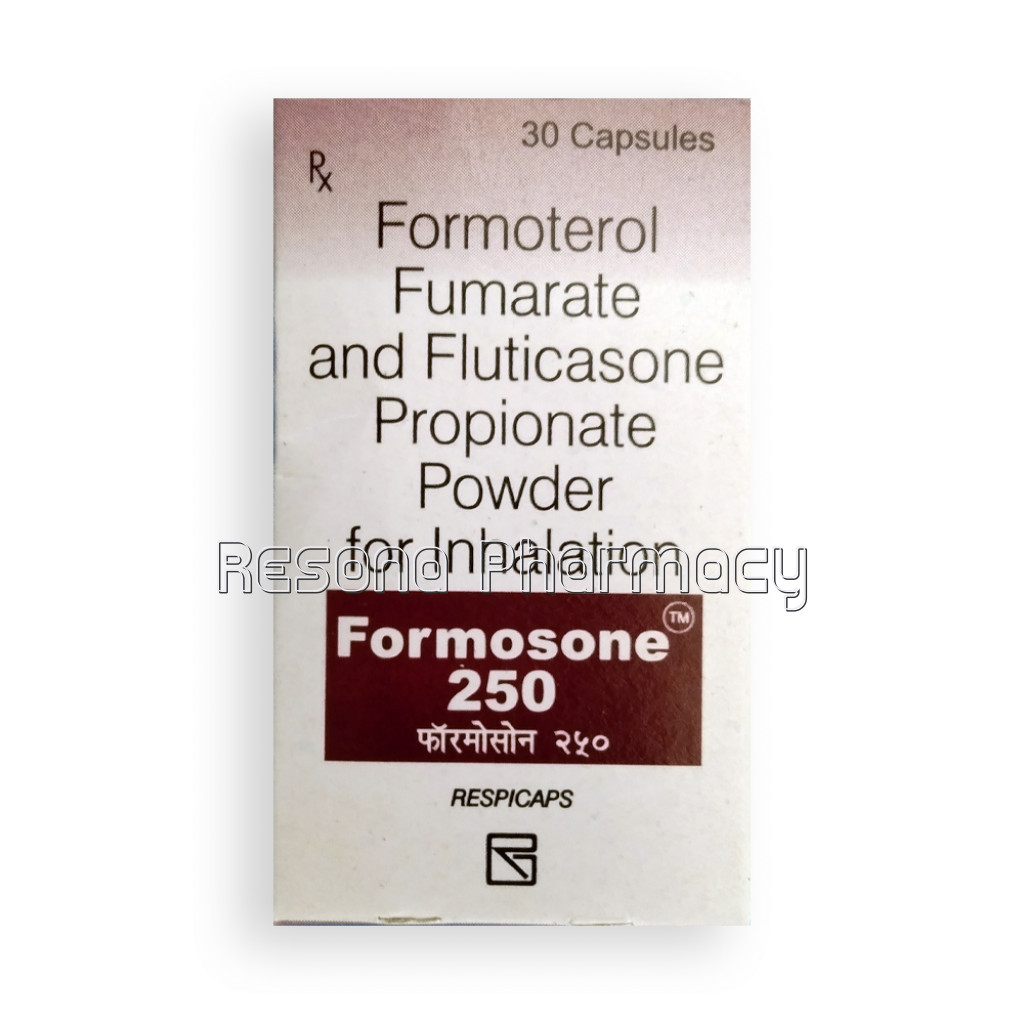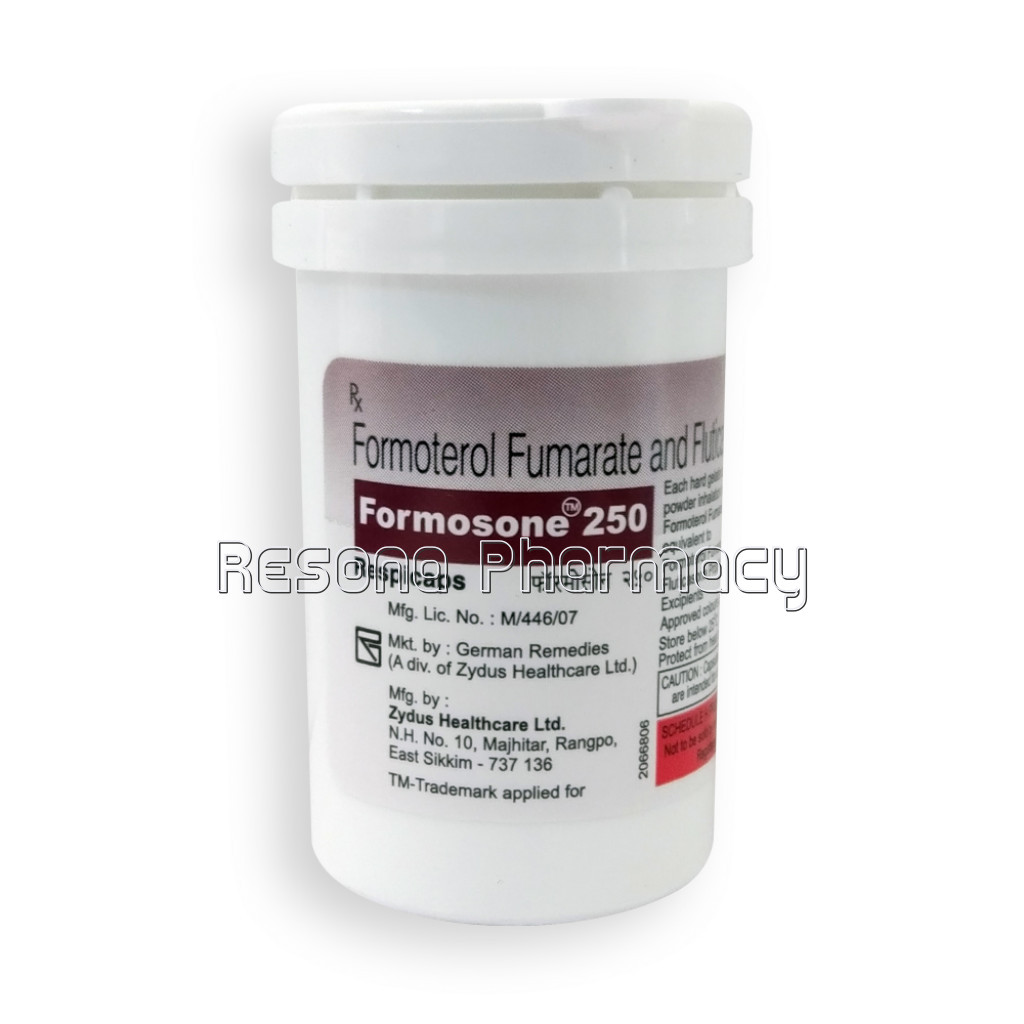Side Effects:
Adverse effects which have been associated with Formosone inhaler during clinical development are given in as follows, listed by system organ class. The following frequency categories form the basis for classification of the adverse effects as: Very common (≥1/10), common (≥1/100 and <1/10), uncommon (≥1/1000 and <1/100), rare (≥1/10,000 and <1/1000), very rare (<1/10,000) and not known (cannot be estimated from the available data). Within each frequency grouping, adverse effects are presented in order of decreasing seriousness.
Infections and Infestations: Rare:
Oral candidiasis, acute sinusitis.
Metabolism and Nutrition Disorders: Uncommon: Hyperglycaemia.
Psychiatric Disorders: Rare: Abnormal dreams, agitation, insomnia. Not Known: Psychomotor hyperactivity, anxiety, depression, aggression, behavioural changes (predominantly in children).
Nervous System Disorders: Uncommon: Headache, tremor, dizziness, dysgeusia.
Ear and Labyrinth Disorders: Rare: Vertigo.
Cardiac Disorders: Uncommon: Palpitations, ventricular, extrasystoles. Rare: Angina pectoris, tachycardia.
Vascular Disorders: Rare: Hypertension.
Respiratory, Thoracic and Mediastinal Disorders: Uncommon: Exacerbation of asthma, dysphonia, throat irritation. Rare: Dyspnoea, cough.
Gastrointestinal Disorders: Uncommon: Dry mouth. Rare: Diarrhoea, dyspepsia.
Skin and Subcutaneous Tissue Disorders: Rare: Rash.
Musculoskeletal and Connective Tissue Disorders: Rare: Muscle spasms.
General Disorders and Administration Site Conditions: Uncommon: Peripheral oedema. Rare: Asthenia.
As with other inhalation therapy, paradoxical bronchospasm may occur with an immediate increase in wheezing and shortness of breath after dosing. Paradoxical bronchospasm responds to a rapid-acting inhaled bronchodilator and should be treated straight away. Formosone inhaler should be discontinued immediately, the patient assessed and alternative therapy instituted if necessary.
Since Formosone inhaler contains both Fluticasone (Formosone) propionate and Formoterol (Formosone) fumarate, the same pattern of adverse effects as reported for these substances may occur. The following adverse effects are associated with Fluticasone (Formosone) propionate and Formoterol (Formosone) fumarate, but have not been seen during the clinical development of Formosone inhaler:
Fluticasone (Formosone) Propionate: Hypersensitivity reactions including, urticaria, pruritus, angiooedema (mainly facial and oropharyngeal), anaphylactic reactions. Systemic effects of inhaled corticosteroids may occur, particularly at high doses prescribed for prolonged periods. These may include Cushing's syndrome, cushingoid features, adrenal suppression, growth retardation in children and adolescents, decrease in bone mineral density, cataract and glaucoma, sleep disorders, contusion, skin atrophy and susceptibility to infections. The ability to adapt to stress may be impaired. The systemic effects described, however, are much less likely to occur with inhaled corticosteroids than with oral corticosteroids. Prolonged treatment with high doses of inhaled corticosteroids may result in clinically significant adrenal suppression and acute adrenal crisis. Additional systemic corticosteroid cover may be required during periods of stress (trauma, surgery, infection).
Formoterol (Formosone) Fumarate: Hypersensitivity reactions (including hypotension, urticaria, angioneurotic oedema, pruritus, exanthema), QTc interval prolongation, hypokalaemia, nausea, myalgia, increased blood lactate levels. Treatment with β2-agonists eg, Formoterol (Formosone) may result in an increase in blood levels of insulin, free fatty acids, glycerol and ketone bodies.
Hypersensitivity reactions have been reported in patients using inhaled sodium cromoglicate as an active ingredient. Whilst Formosone inhaler contains only a low concentration of sodium cromoglicate as an excipient, it is unknown if hypersensitivity reactions are dose-dependent.
In the unlikely event of a hypersensitivity reaction to Formosone inhaler, treatment should be initiated in accordance with standard treatment for any other hypersensitivity reaction, which may include the use of antihistamines and other treatment as required. Formosone inhaler may need to be discontinued immediately and an alternative asthma therapy may need to be initiated if necessary.
Dysphonia and candidiasis may be relieved by gargling or rinsing the mouth with water or brushing the teeth after using the product. Symptomatic candidiasis can be treated with topical antifungal therapy whilst continuing the treatment with Formosone inhaler.
Item requires a valid prescription



